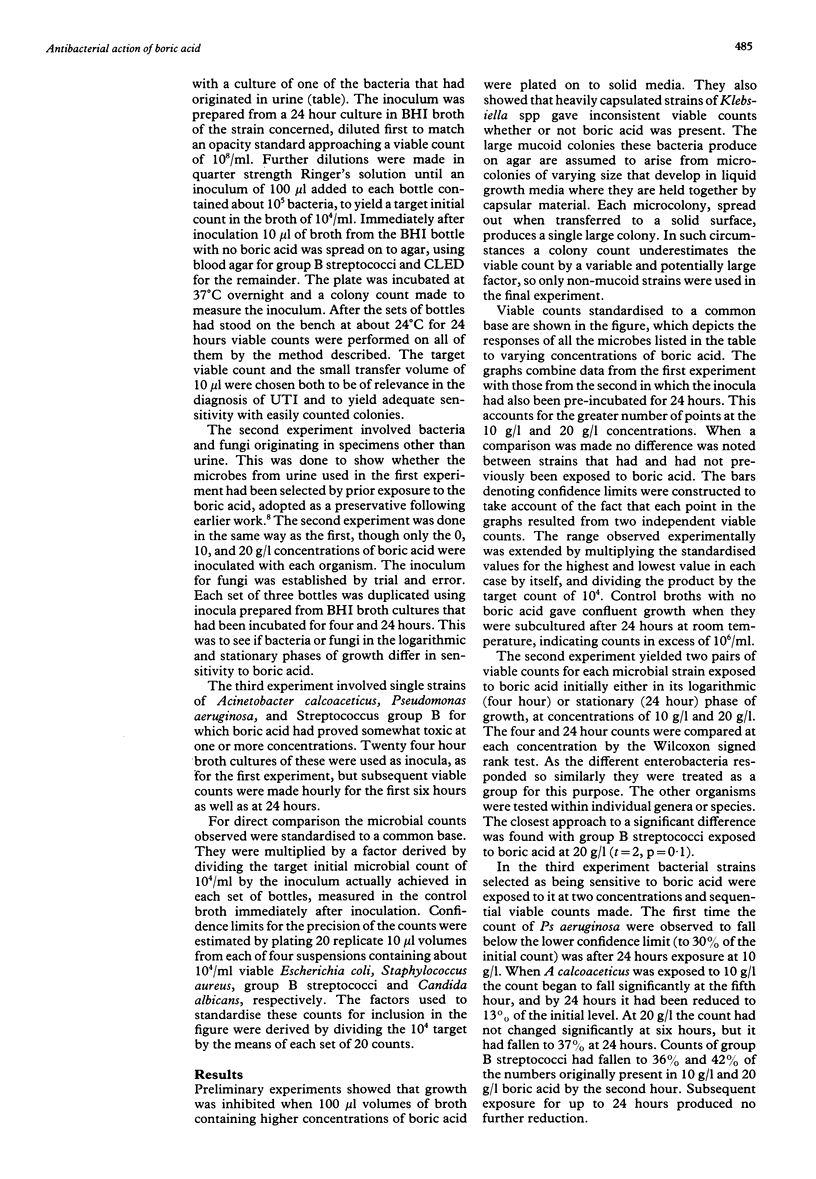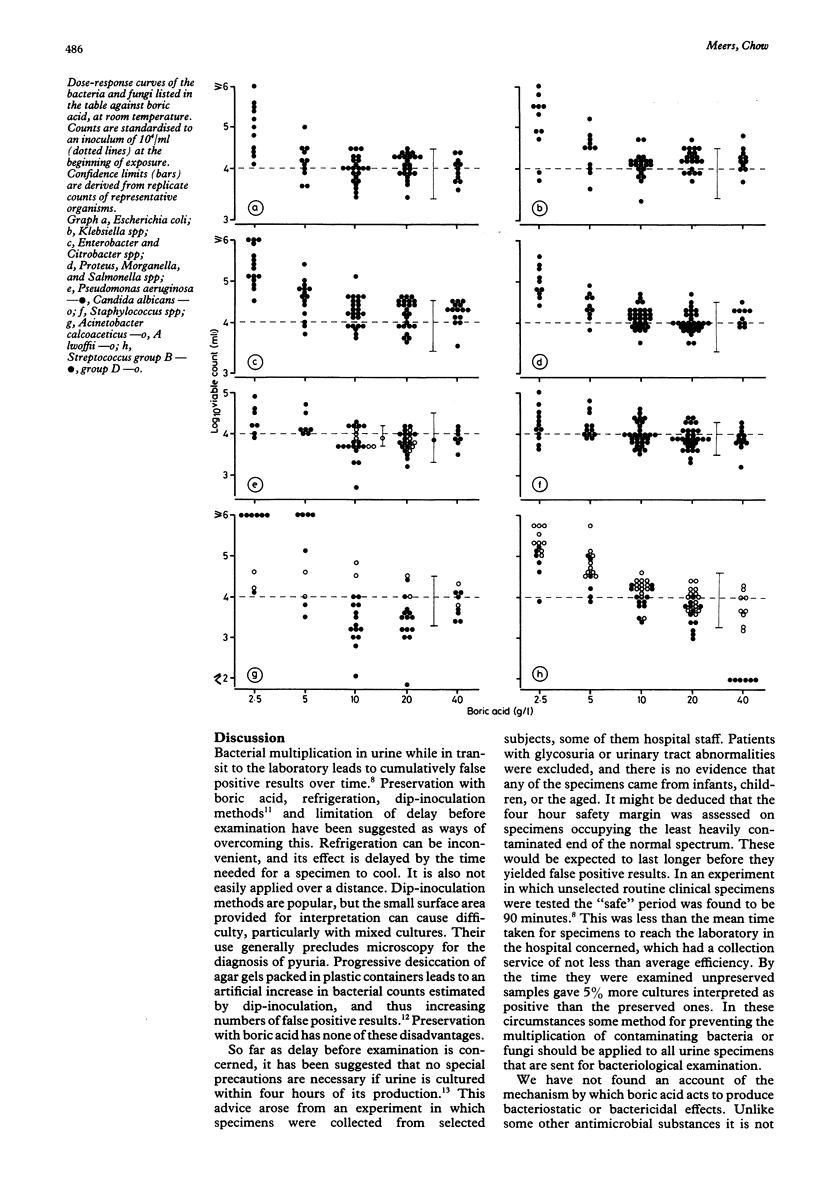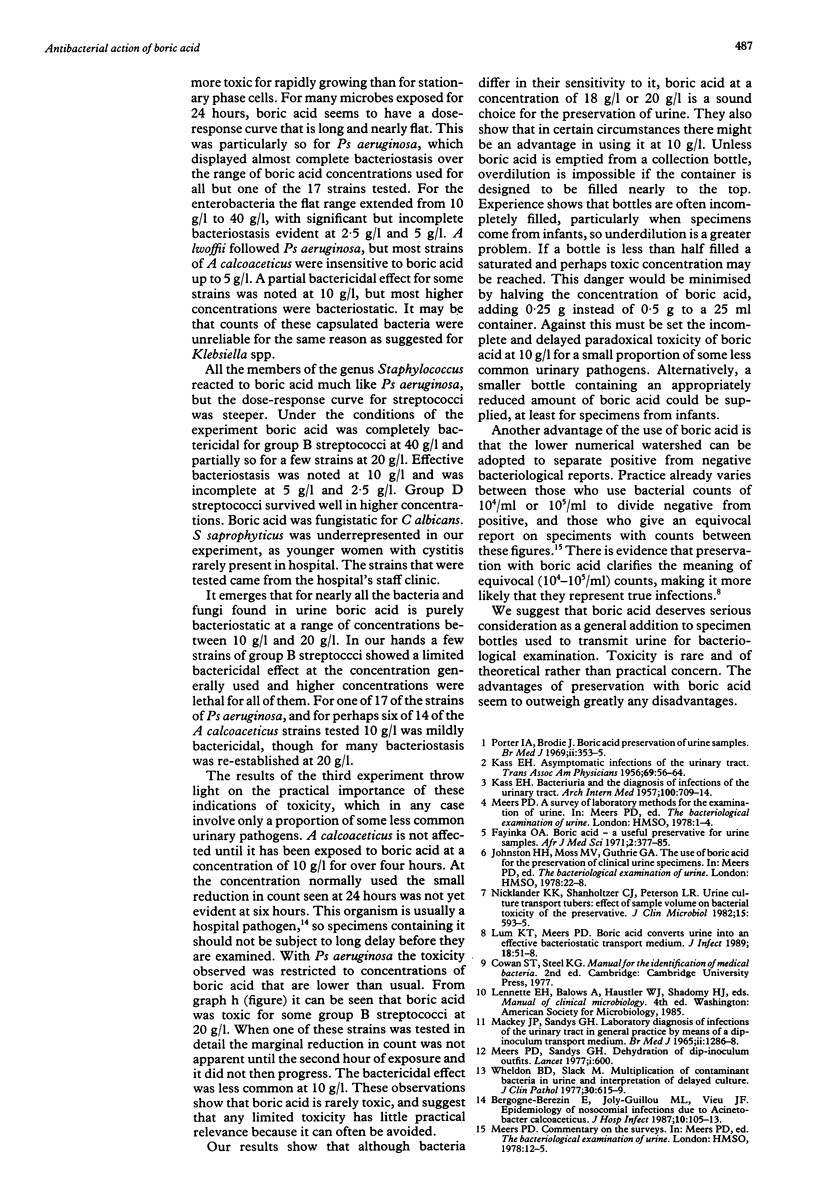Abstract
Boric acid has been used for over 20 years to preserve urine while in transit for bacteriological examination. It has been suggested that it may be toxic for some urinary pathogens. To investigate this several strains of bacteria and fungi commonly found in urine were exposed to different concentrations of boric acid in nutrient broth. Viable counts were made at the outset and at intervals for up to 24 hours at room temperature to detect bacteriostatic or bactericidal effects. At concentrations between 10 and 20 g/l boric acid was bacteriostatic or fungistatic for very nearly all the common urinary pathogens. At 10 g/l boric acid was weakly bactericidal for some strains of Acinetobacter calcoaceticus and Pseudomonas aeruginosa, though higher concentrations were bacteriostatic only. Group B streptococci varied in their response to boric acid, but for most of them 10 or 20 g/l was satisfactorily bacteriostatic. It is concluded that boric acid is rarely toxic, and when it is, the effect is usually sufficiently delayed to be of only theoretical importance.
Full text
PDF



Selected References
These references are in PubMed. This may not be the complete list of references from this article.
- Bergogne-Bérézin E., Joly-Guillou M. L., Vieu J. F. Epidemiology of nosocomial infections due to Acinetobacter calcoaceticus. J Hosp Infect. 1987 Sep;10(2):105–113. doi: 10.1016/0195-6701(87)90135-6. [DOI] [PubMed] [Google Scholar]
- Fayinka O. A. Boric acid--a useful preservative for urine samples. Afr J Med Sci. 1971 Oct;2(4):377–385. [PubMed] [Google Scholar]
- KASS E. H. Asymptomatic infections of the urinary tract. Trans Assoc Am Physicians. 1956;69:56–64. [PubMed] [Google Scholar]
- KASS E. H. Bacteriuria and the diagnosis of infections of the urinary tract; with observations on the use of methionine as a urinary antiseptic. AMA Arch Intern Med. 1957 Nov;100(5):709–714. doi: 10.1001/archinte.1957.00260110025004. [DOI] [PubMed] [Google Scholar]
- Lum K. T., Meers P. D. Boric acid converts urine into an effective bacteriostatic transport medium. J Infect. 1989 Jan;18(1):51–58. doi: 10.1016/s0163-4453(89)93667-0. [DOI] [PubMed] [Google Scholar]
- Mackey J. P., Sandys G. H. Laboratory diagnosis of infections of the urinary tract in general practice by means of a dip-inoculum transport medium. Br Med J. 1965 Nov 27;2(5473):1286–1288. doi: 10.1136/bmj.2.5473.1286. [DOI] [PMC free article] [PubMed] [Google Scholar]
- Meers P. D., Sandys G. H. Dehydration of dip-inoculum outfits. Lancet. 1977 Mar 12;1(8011):600–600. doi: 10.1016/s0140-6736(77)92026-8. [DOI] [PubMed] [Google Scholar]
- Nickander K. K., Shanholtzer C. J., Peterson L. R. Urine culture transport tubes: effect of sample volume on bacterial toxicity of the preservative. J Clin Microbiol. 1982 Apr;15(4):593–595. doi: 10.1128/jcm.15.4.593-595.1982. [DOI] [PMC free article] [PubMed] [Google Scholar]
- Porter I. A., Brodie J. Boric acid preservation of urine samples. Br Med J. 1969 May 10;2(5653):353–355. doi: 10.1136/bmj.2.5653.353. [DOI] [PMC free article] [PubMed] [Google Scholar]
- Wheldon D. B., Slack M. Multiplication of contaminant bacteria in urine and interpretation of delayed culture. J Clin Pathol. 1977 Jul;30(7):615–619. doi: 10.1136/jcp.30.7.615. [DOI] [PMC free article] [PubMed] [Google Scholar]


